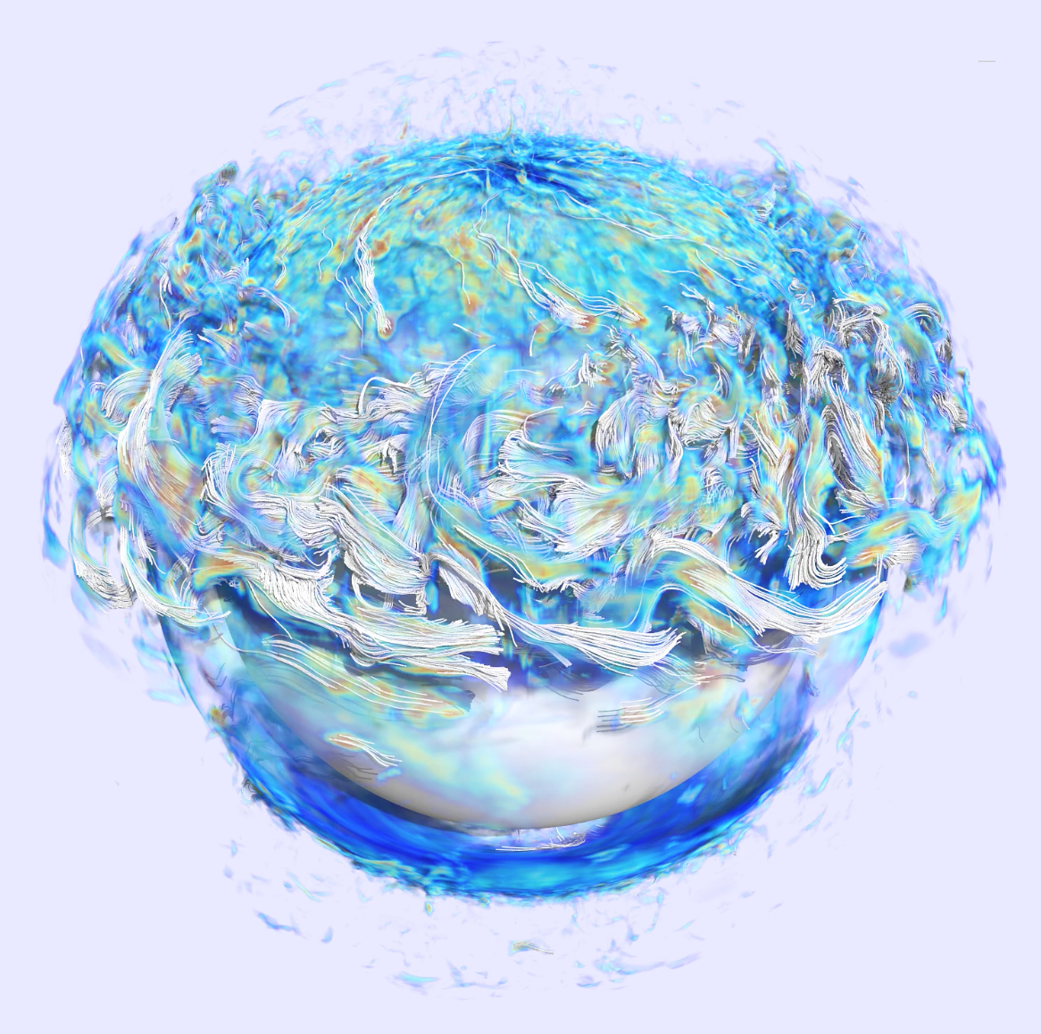Although much has been discovered about our Sun and its constantly erupting surface, scientists are turning to simulations created on Pleiades, NASA’s fastest supercomputer, to better understand the Sun’s ever-evolving magnetic field and how it affects the solar cycle, which produces solar flares.
The simulation shows the evolution of the magnetic field on the Sun, with magnetic field lines drawn in based on continuous magnetic field strength. A large portion of the magnetic field is stored at the transition region between the convective and radiative layers, and emerges in twisted wreath structures onto the Sun’s surface.
Using realistic 3-dimensional simulations, a team at the NASA Advanced Supercomputing facility at Ames Research Center in Silicon Valley, in collaboration with researchers at the New Jersey Institute of Technology, have discovered that the Sun’s thin interface layer between the radiative zone and the convection zone, called the tachocline, is one of the main drivers behind the solar cycle, playing a much bigger role in shaping the solar magnetic field than researchers previously thought.
The team used a numerical model for studying massive flows of plasma in and around the Sun’s convection zone, to run a complex set of calculations on Pleiades in just 3 weeks. This would have taken 10 years on regular computers.
The discovery could help scientists take our understanding of solar weather to a new level, bringing us closer to predicting the origins of solar flares – powerful eruptions on the Sun’s surface that can disrupt electronic devices, GPS, satellites, radio communications, knock out power grids and create space weather – that change weather patterns here on Earth.
To view the full simulation video and learn more about other simulations of the Sun, visit:
https://www.nas.nasa.gov/publications/articles/feature_solar_simulations_Stejko.html
Image Credit: Timothy Sandstrom, NASA Advanced Supercomputing Division
Author: Jill Dunbar, NASA Advanced Supercomputing DivisionMedia contact: Kimberly Minafra, NASA Ames Research Center, Silicon Valley



























